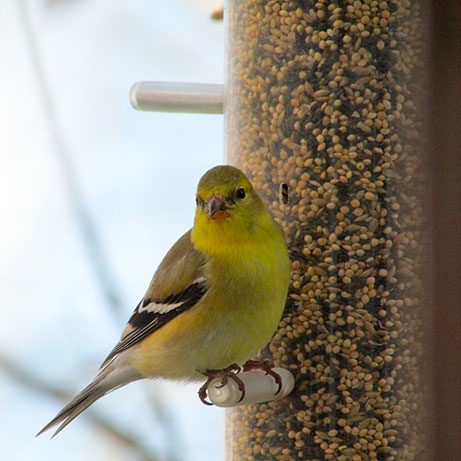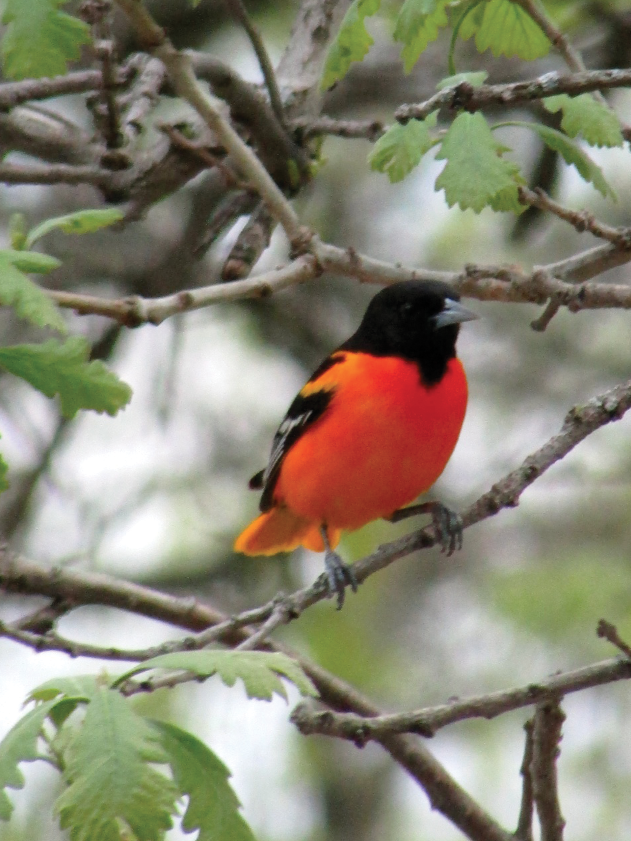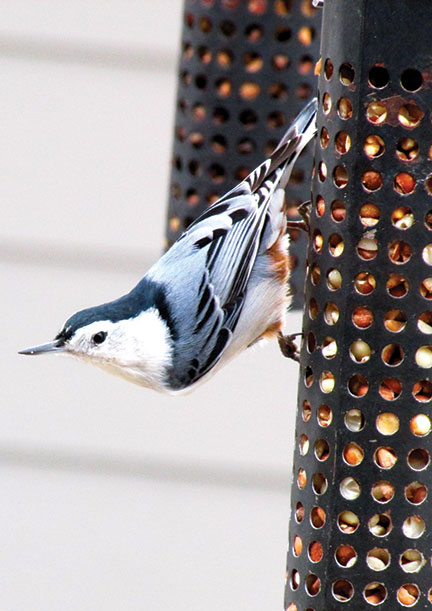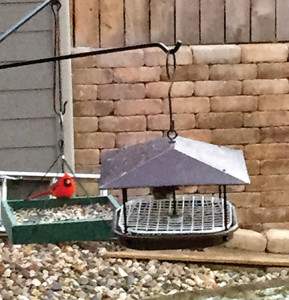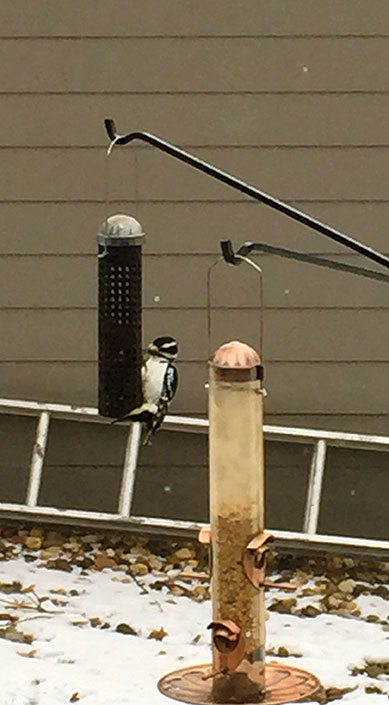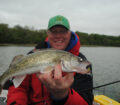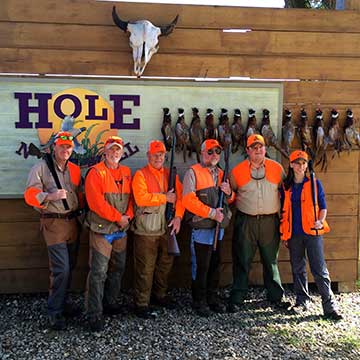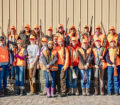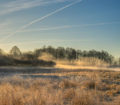By Darial Weisman
As we move into winter months, bird feeding enthusiasts (my husband and I are two of them) get the opportunity to watch a wide range of birds. Because we have several things that wintering birds like, they are attracted to our yard.
First off, our neighborhood is secluded with lots of mature oak trees and pine trees. These provide protection from the incredible northwest winds that come so often and also the potential winter storms. At the same time, the trees offer protection from predators. The pine trees, especially, afford protection during a snowstorm. At the same time, our neighborhood is blessed with several wooded ravines that really protect the birds from the elements. We also have planted several clumps of native grasses, and you would not believe the protection that these provide. On a recent windy December day, I was in the backyard cleaning up some downed branches. I was less than a foot away from several clumps of grass, and out from the clump (I never saw them) came several tiny birds. Even if you do not have the luxury of a wooded neighborhood, by strategically planting shrubs, bushes and pine trees, you can offer your birds protection.
Food is obviously important for attracting birds. However, don’t be fooled by some cheap birdseed you might think will do the trick. Give them good food. We have two feeding stations. One is a four-armed feeder about 15 feet from our southern exposure sunroom window, perfect for bird watching. We utilize two platform feeders, one filled with black-oil sunflower seeds, while the other one has a special mix to attract cardinals. It contains sunflower seeds, nuts, sunflower hearts, safflower seed, raisins, ground corn, wheat middlings and dried grains. Added to this are two peanut feeders that bring in a wide variety of woodpeckers. These are all set up with a squirrel “slinky” to deny the squirrels access. They get plenty from spilled seed dropped from the feeders. The ground feeders such as juncos, native sparrows, chickadees and even cardinals will take to the ground after these spilled seeds too.
To the west, we have placed three feeding stations. One is a three-tier wrought iron holder with shallow copper bowls that we fill with safflower seed. The chickadees and gold finches just love to come to this, flitting in to take one seed and then back up to the tree to eat, and then back down. What a comedy. On the floor of the deck, the juncos hop about picking up the spilled safflower. We also have a feeder filled with Finch Delight to draw both purple and yellow finches. Finally, we have a suet feeder on the deck for the nuthatches and woodpeckers.
It is really important to keep the feeders filled with good clean seed. After a snowstorm, check out the feeders. If they are clogged or filled with snow, take the time to clean everything out. We also try to fill the feeders in the evening to avoid scaring birds off during the day. This holds true for my cardinals that come to the feeders. They are so shy that they often come right at daylight and by sunrise, they are gone. Very seldom do they come very often during the day. They also occasionally appear in late afternoon.
Finally, we add a huge drawing card for all birds: fresh water. Winter often means birds really have to look for fresh water. Providing a fresh water supply along with the bird seed, will increase the number and variety of birds drawn to your yard.
With a birdbath heater to keep it open even in the coldest weather, the fresh water is like a magnet for birds and squirrels. The big key here is to keep the bird waterer full with good clean water. Nothing is more disgusting than a waterer that is never cleaned. Bird droppings, seeds and shells make a pretty ugly and unclean mess.
By dividing up our feeding stations, we can see the feeding activity from the sunroom, the kitchen, dining room and the living room. It’s such fun to sit in the warm house and observe all that’s going on out the back door!
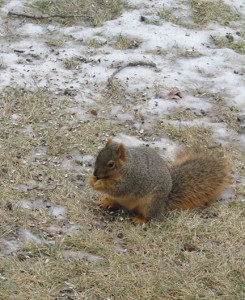
Squirrel feeds on spilled seeds – on the ground – where it belongs! (photo by Darial Weisman)

